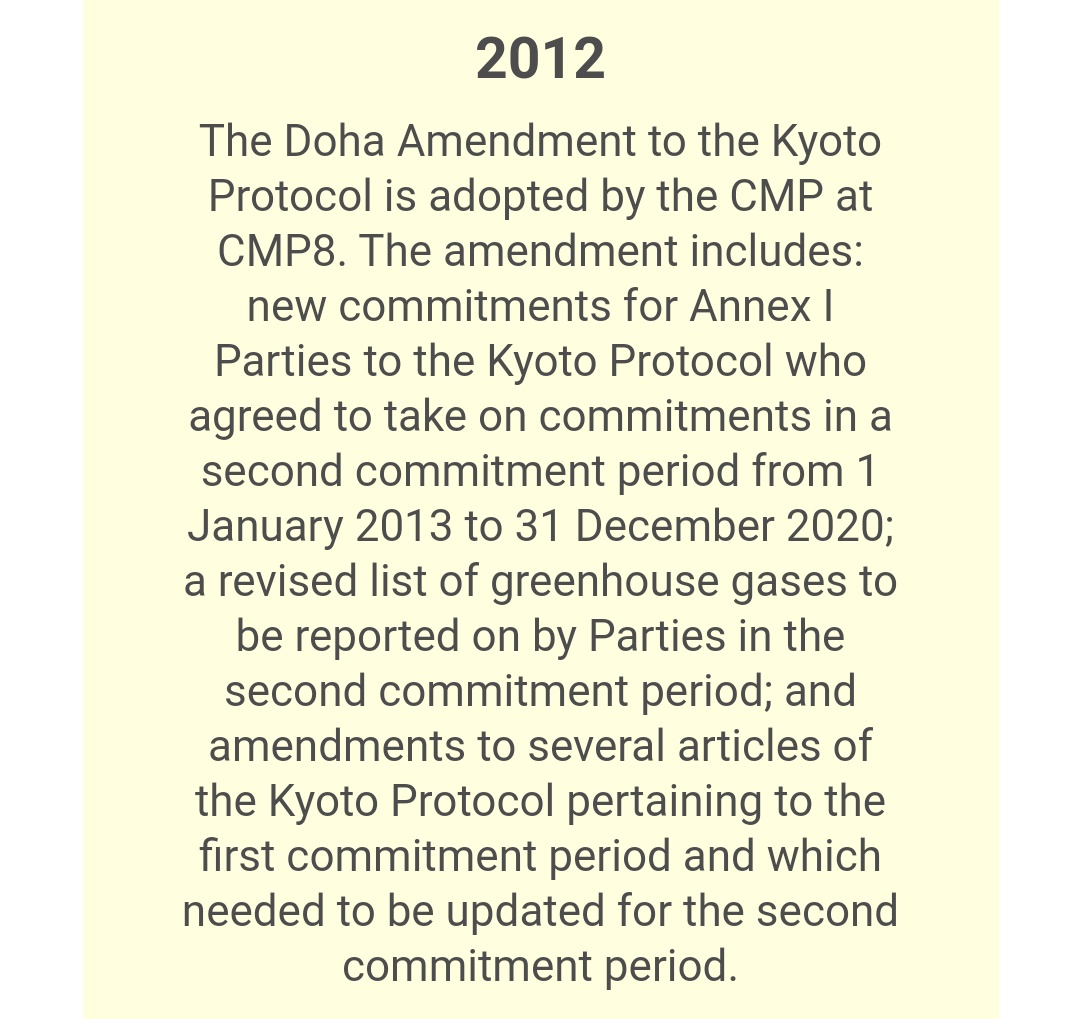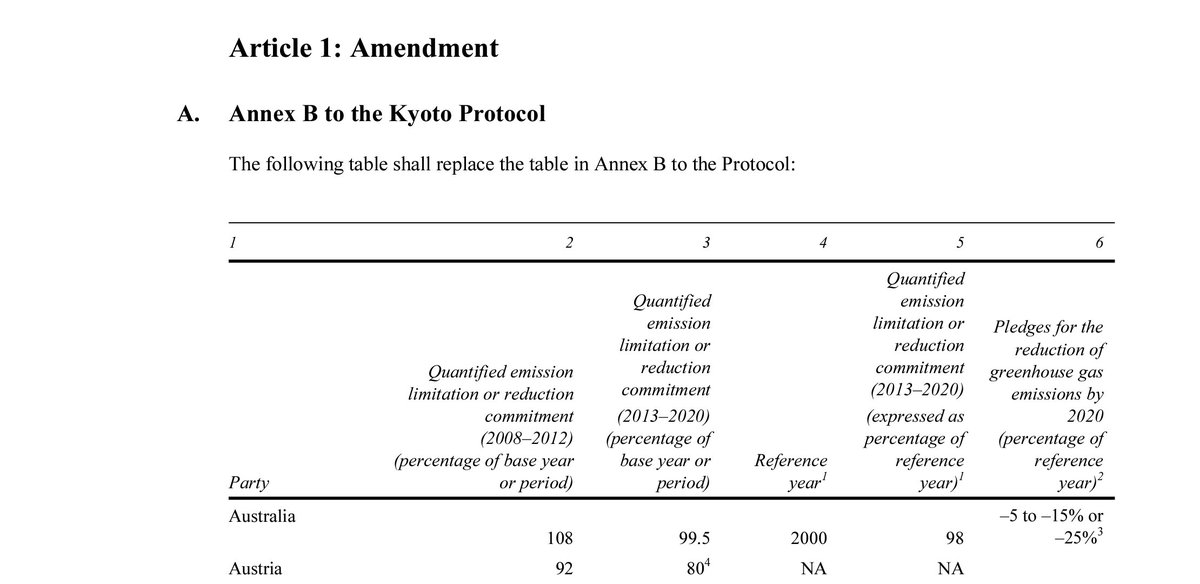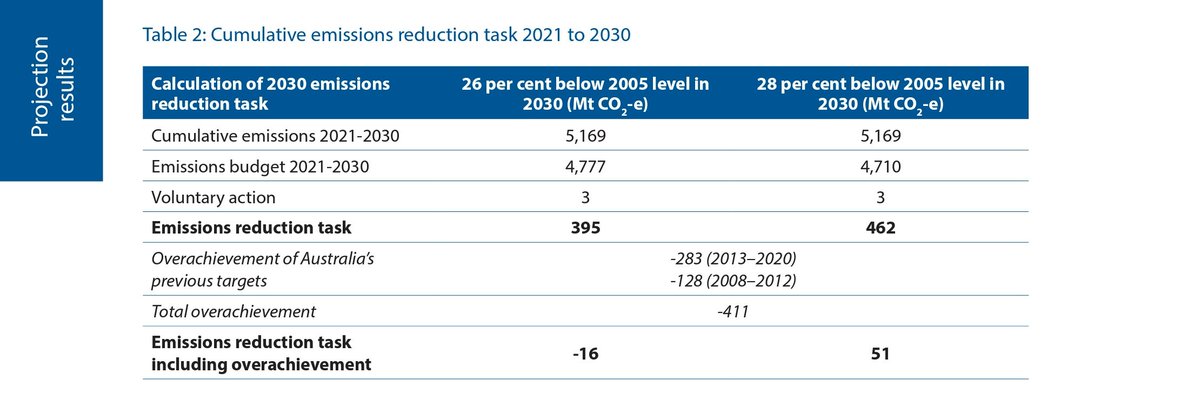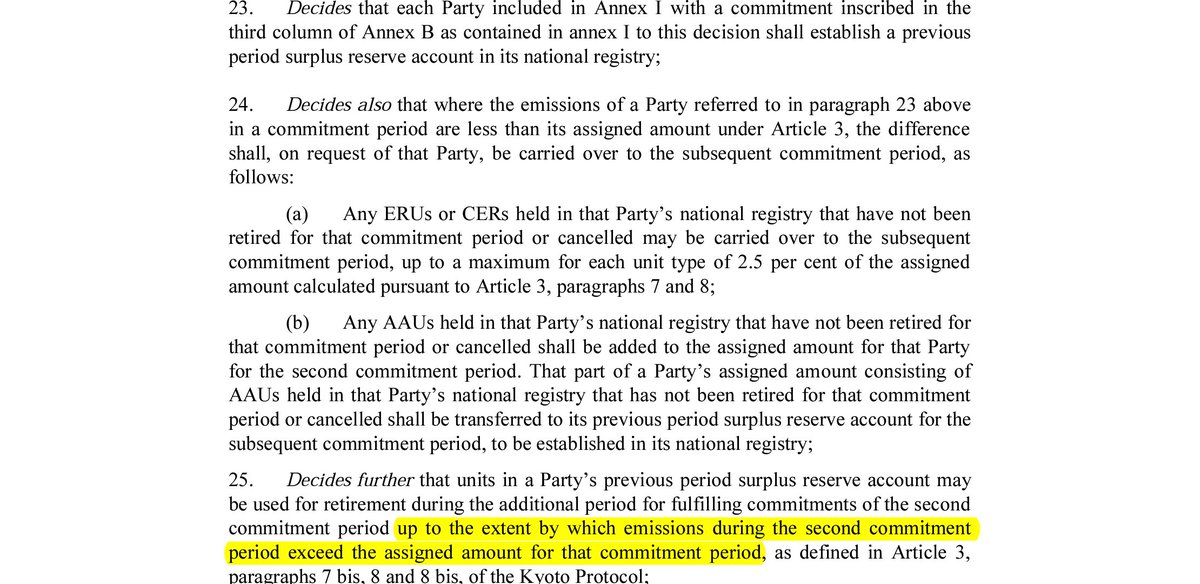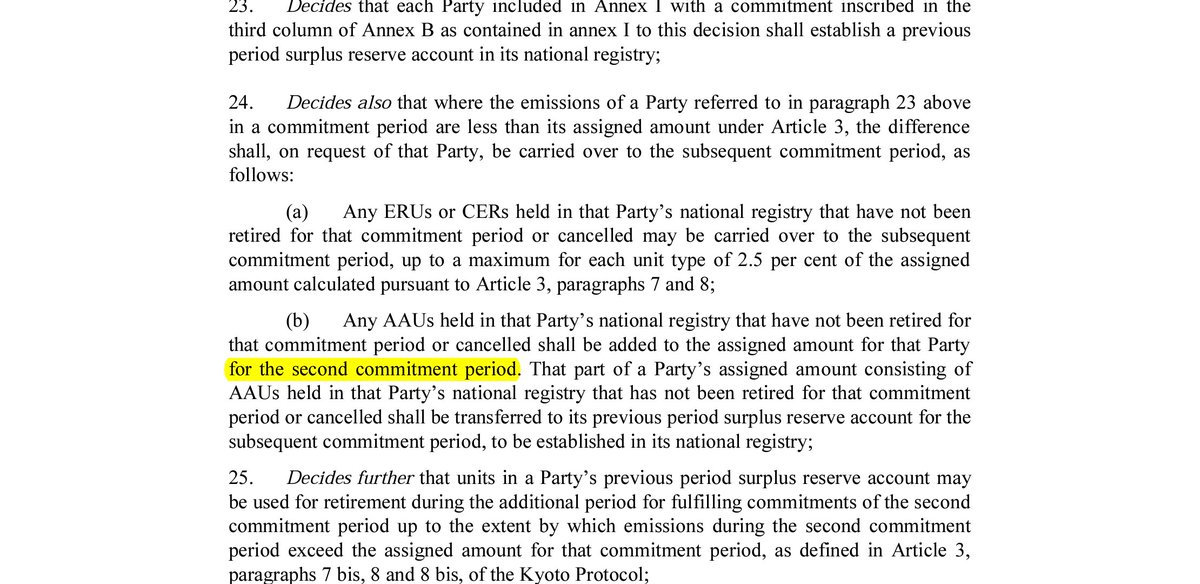Some days, it feels like the fudges were written just for me.
So...
*deep breath*
(a thread.) https://twitter.com/AngusTaylorMP/status/1278143248423243776
So...
*deep breath*
(a thread.) https://twitter.com/AngusTaylorMP/status/1278143248423243776
First, today's media announcement and this cute little video are based on a pretty basic misunderstanding of our international commitments.
Namely, ...



YESTERDAY WAS NOT THE LAST DAY OF THE KYOTO PROTOCOL. TODAY WAS NOT THE FIRST DAY OF THE PARIS AGREEMENT.



Namely, ...



YESTERDAY WAS NOT THE LAST DAY OF THE KYOTO PROTOCOL. TODAY WAS NOT THE FIRST DAY OF THE PARIS AGREEMENT.



The Minister seems to think that the @UNFCCC operates on financial years. It does not. The second commitment under the Kyoto Protocol began--if it ever began at all--on 1 January 2013 and ends 31 December 2020.
What does the Kyoto Protocol say to the angel of death?
What does the Kyoto Protocol say to the angel of death?
This isn't complicated stuff, and I'm a bit concerned that this isn't understood by the Minister.
Image source: https://www.un.org/sustainabledevelopment/climate-negotiations-timeline/
Image source: https://www.un.org/sustainabledevelopment/climate-negotiations-timeline/
Second, there's a problem with counting here. Australia's first real climate commitment was to hold annual emissions below and average of 8% above 1990 levels for between 1/1/2008 to 31/12/2012.
We beat that target, but it was a ridiculous target for us. https://www.google.com/amp/s/theconversation.com/amp/australia-hit-its-kyoto-target-but-it-was-more-a-three-inch-putt-than-a-hole-in-one-44731
We beat that target, but it was a ridiculous target for us. https://www.google.com/amp/s/theconversation.com/amp/australia-hit-its-kyoto-target-but-it-was-more-a-three-inch-putt-than-a-hole-in-one-44731
We beat it by 128 Mt on the final count. That means we used 96% of an absurdly inflated allocation.
The next commitment is the one that the Minister claims ended yesterday (again, it did not, and there is no question at all that it didn't.)
The next commitment is the one that the Minister claims ended yesterday (again, it did not, and there is no question at all that it didn't.)
Then there's our second target, supposedly 5% below 2000 levels in 2020, but only if you start the trajectory from an absurdly high point.
Image source: https://publications.industry.gov.au/publications/climate-change/climate-change/publications/emissions-projections-2019.html
Image source: https://publications.industry.gov.au/publications/climate-change/climate-change/publications/emissions-projections-2019.html
You'll notice that emissions in 2020 weren't expected (this is pre-COVID) to be 5% below 2000 levels.
However, the department figures this is fine because it has decided that the start point for our trajectory to that 2020 goal is higher than emissions have ever been.
However, the department figures this is fine because it has decided that the start point for our trajectory to that 2020 goal is higher than emissions have ever been.
By the government's count, we can meet a 5% below 2000 levels in 2020 by holding emissions to an average of 5% *above* 2000 levels per year between 1/1/2013 and 31/12/2020. (*I know*)
But neither what the government says nor "5% below 2000 levels in 2020" are our target for the period.
If Australia has any legal target for 2020, it can only be to hold emissions to an average 0.5% of 1990 levels between 1/1/2013 and 31/12/2020.
There is no other goal.
If Australia has any legal target for 2020, it can only be to hold emissions to an average 0.5% of 1990 levels between 1/1/2013 and 31/12/2020.
There is no other goal.
The screengrab above is taken directly from the Doha Amendment to the Kyoto Protocol, which sets up the second Kyoto period.
See it for yourself here: https://unfccc.int/files/kyoto_protocol/application/pdf/kp_doha_amendment_english.pdf
See it for yourself here: https://unfccc.int/files/kyoto_protocol/application/pdf/kp_doha_amendment_english.pdf
There are really complicated reasons why this is Australia's goal and not anything to do with the minimum 5% reduction we promised, but those aren't really amenable to being described in a tweet.
Long story short, we will meet that target, but not by anywhere near 430 Mt.
Long story short, we will meet that target, but not by anywhere near 430 Mt.
The only way you get to 430 Mt, and the way the department gets that number, is by adding our performance under the first commitment period to our performance under the second.
Here's them doing exactly that.
Source: https://publications.industry.gov.au/publications/climate-change/climate-change/publications/emissions-projections-2019.html
Here's them doing exactly that.
Source: https://publications.industry.gov.au/publications/climate-change/climate-change/publications/emissions-projections-2019.html
The rules for Kyoto are crystal clear that this is not how it works. This is the international climate law equivalent of driving 10 km/h below the limit on two different streets, adding them together and claiming you drove 20 km/h below the speed limit.
The Kyoto rules do allow credit from the first period to be used in the second, but *only if* you have failed the second.
Buried in legalese and jargon (sorry!), that rule is here.
Source: https://unfccc.int/resource/docs/2012/cmp8/eng/13a01.pdf
Buried in legalese and jargon (sorry!), that rule is here.
Source: https://unfccc.int/resource/docs/2012/cmp8/eng/13a01.pdf
So we can do weird creative accounting (like the speed limit analogy above), but only if we've failed in the second period, and only to the extent that is needed to pass.
That screenshot is also crystal clear with one (of many) reasons why any such credits expire at the end of this year and are no longer usable in Paris.
Let me highlight the relevant words.
Carryover is the exception to the rule that you settle commitments within a period.
Let me highlight the relevant words.
Carryover is the exception to the rule that you settle commitments within a period.
This spreadsheet magic, permitting countries to carry extra credit from one period to the next is a limited time offer, and was intentionally written as such.
Countries can carry credit from the first period into the second and use it *if they fail the second*.
After that?
Countries can carry credit from the first period into the second and use it *if they fail the second*.
After that?
This is why @CFigueres and @LaurenceTubiana (the two people one might legitimately regard as the architects of the Paris Agreement) have both pointed out that by forcing this issue, Australia risks breaking the Paris Agreement.
Here's @LaurenceTubiana. https://twitter.com/JoeABCNews/status/1217283977393795073?s=19
Here's @LaurenceTubiana. https://twitter.com/JoeABCNews/status/1217283977393795073?s=19
But don't just take their word for it. Here's a bunch of pre-eminent international lawyers saying it too: https://www.smh.com.au/politics/federal/kyoto-carry-over-credits-baseless-in-international-law-experts-say-20200304-p546rw.html
Or @CA_Latest: https://climateanalytics.org/publications/2019/australias-proposed-kyoto-carryover-nature-scale-implications-legal-issues-and-environmental-integrity-of-the-paris-agreement/
Or heck, here's me and my boss at @climatecouncil saying it: https://www.climatecouncil.org.au/explainer-federal-government-fails-on-climate-at-cop25/
The ALP's @SenatorWong had the Australian environment ambassador pretty much admit this too in estimates a few months back.
https://parlinfo.aph.gov.au/parlInfo/download/committees/estimate/7d966334-bd7b-40ca-b4ae-c7e0f06c99d2/toc_pdf/Foreign%20Affairs,%20Defence%20and%20Trade%20Legislation%20Committee_2020_03_05_7615_Official.pdf;fileType=application%2Fpdf#page=72
https://parlinfo.aph.gov.au/parlInfo/download/committees/estimate/7d966334-bd7b-40ca-b4ae-c7e0f06c99d2/toc_pdf/Foreign%20Affairs,%20Defence%20and%20Trade%20Legislation%20Committee_2020_03_05_7615_Official.pdf;fileType=application%2Fpdf#page=72
But maybe a person who doesn't know that the @UNFCCC operates on calendar years will know better.
(btw, you might have noticed a few comments indicating that the 2020 target might not exist. This is because the Doha Amendment to the Kyoto Protocol, which creates the obligations attached to the second commitment period still faces technical hurdles before it becomes law.)
(by the *other* way, 'breaking the Paris Agreement' is no hyperbole.
The combined efforts of Brazil and Australia mean that when the Paris Agreement *actually* starts (1 January 2021), there will be no international market mechanism.)
The combined efforts of Brazil and Australia mean that when the Paris Agreement *actually* starts (1 January 2021), there will be no international market mechanism.)
There is always a typo. This should say 0.5% *below* 1990 levels. Not "of". Balls. https://twitter.com/timinmitcham/status/1278297336045662208?s=19

 Read on Twitter
Read on Twitter